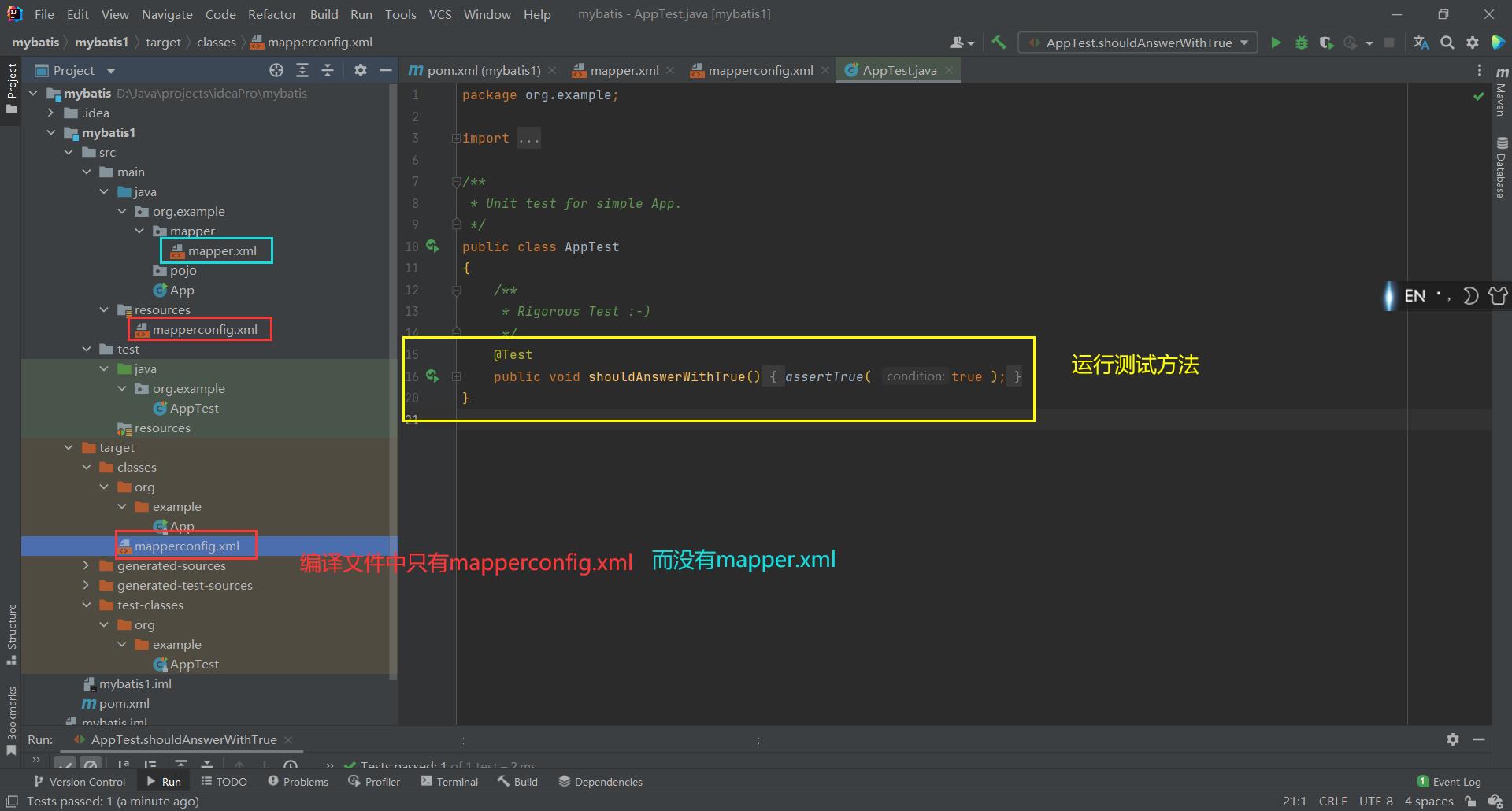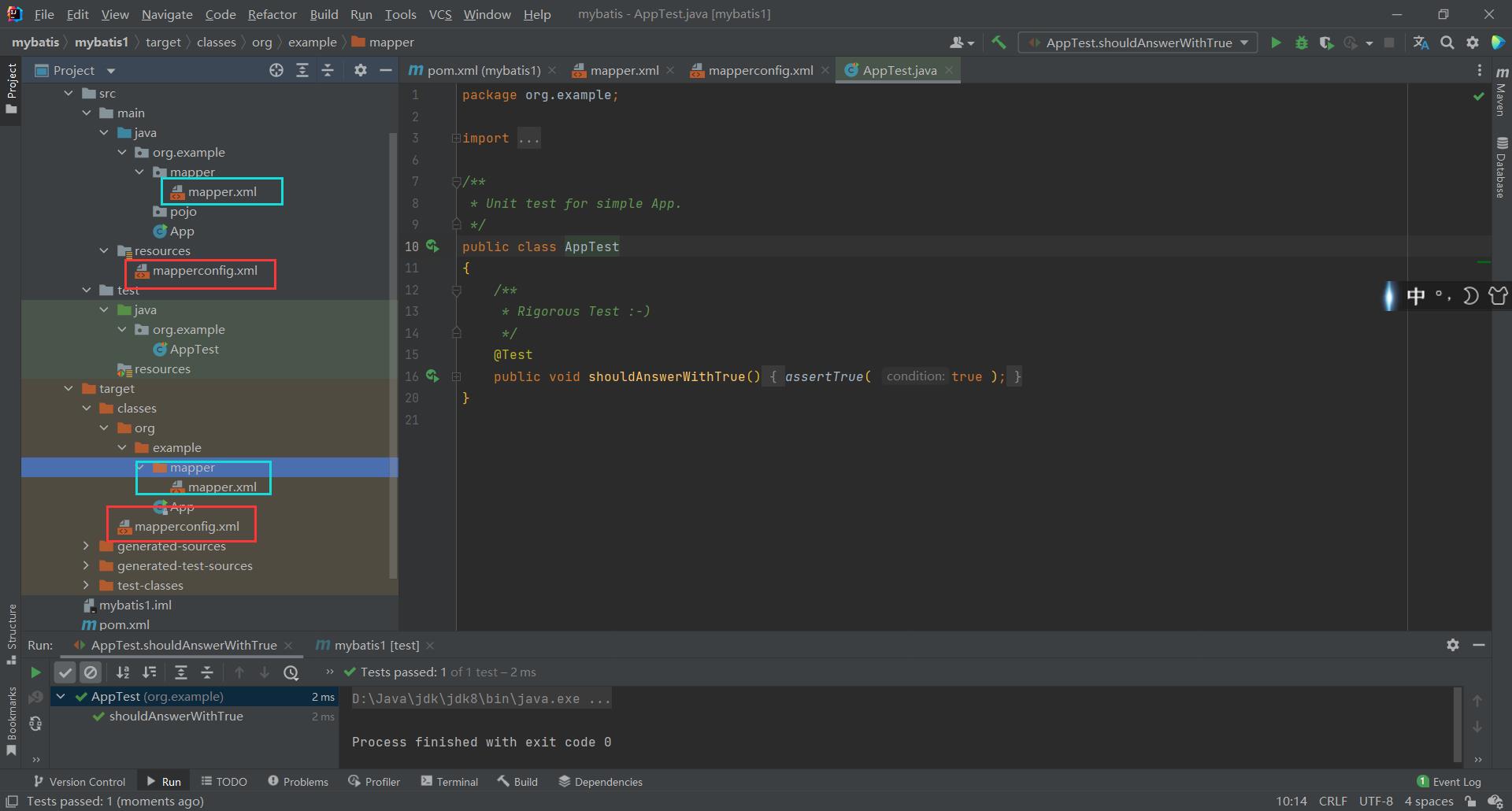Mybatis快速入门
Posted 364.99°
tags:
篇首语:本文由小常识网(cha138.com)小编为大家整理,主要介绍了Mybatis快速入门相关的知识,希望对你有一定的参考价值。
目录
- 1.一条完整的Mybatis使用过程
- 2.Mybatis的增删改查
- 3.mybatis数据映射
- 4.mybatis对象分析
- 5.简化之前的测试代码
- 6.优化映射文件——为实体类注册别名
- 7.设置日志输出查看底层执行
1.一条完整的Mybatis使用过程
目录结构:

1.创建数据库和表,并插入数据
CREATE DATABASE `mybatis` /*!40100 DEFAULT CHARACTER SET utf8mb4 */
CREATE TABLE `student` (
`id` int(11) NOT NULL AUTO_INCREMENT,
`name` varchar(255) DEFAULT NULL,
`email` varchar(255) DEFAULT NULL,
`age` int(11) DEFAULT NULL,
PRIMARY KEY (`id`)
) ENGINE=InnoDB AUTO_INCREMENT=5 DEFAULT CHARSET=utf8mb4
并插入数据:

2.新建maven项目,添加依赖和插件
新建maven项目(quickstart模板)
添加mybatis依赖
<!--mybatis依赖-->
<dependency>
<groupId>org.mybatis</groupId>
<artifactId>mybatis</artifactId>
<version>3.5.7</version>
</dependency>
<!--mysql依赖-->
<dependency>
<groupId>mysql</groupId>
<artifactId>mysql-connector-java</artifactId>
<version>5.1.49</version>
</dependency>
然后要添加 资源文件的指定
<!--添加资源文件的锁定-->
<build>
<resources>
<!--锁定java目录下的文件-->
<resource>
<directory>src/main/java</directory>
<includes>
<include>**/*.xml</include>
<include>**/*.properties</include>
</includes>
</resource>
<!--锁定文件修改之后,需要重新锁定resources下的文件-->
<resource>
<directory>src/main/resources</directory>
<includes>
<include>**/*.xml</include>
<include>**/*.properties</include>
</includes>
</resource>
</resources>
</build>
为什么要添加资源文件的指定?
来测试一下,不添加资源文件指定:
先clean以下之前编译结果,测试一下添加资源文件锁定后的编译结果:
3.idea添加数据库可视化操作
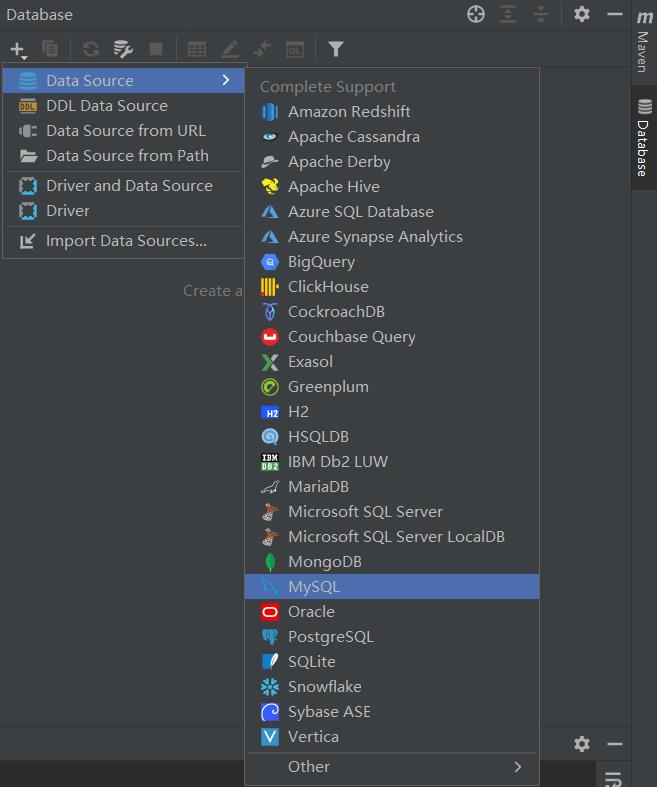


4.写jdbc属性文件
jdbc.diverClassName=com.mysql.jdbc.Driver
jdbc.url=jdbc:mysql://localhost:3306/mybatis?useUnicode=true&characterEncoding=utf8
jdbc.username=root
jdbc.password=admin
5.核心配置文件(配置数据源、jdbc连接参数、注册mapper文件)
SqlMapConfig.xml
先加入约束文件
<?xml version="1.0" encoding="UTF-8" ?>
<!DOCTYPE configuration PUBLIC "-//mybatis.org//DTD Config 3.0//EN"
"http://mybatis.org/dtd/mybatis-3-config.dtd">
核心配置文件内容:
<?xml version="1.0" encoding="UTF-8" ?>
<!DOCTYPE configuration PUBLIC "-//mybatis.org//DTD Config 3.0//EN"
"http://mybatis.org/dtd/mybatis-3-config.dtd">
<configuration>
<!--读取属性文件——JDBC.properties
标签属性:
resources:从resources目录下找指定文件
url:使用绝对路径加载指定文件
-->
<properties resource="jdbc.properties"></properties>
<!--配置数据库的环境变量(数据库连接配置)
标签属性:
default:指定生效的<environment
id:对接<environments的default属性
-->
<environments default="development">
<!--开发时使用的数据库配置-->
<environment id="development">
<!--配置事务管理器
type:指定事务管理的方式
JDBC:事务的控制交给程序员处理
MANAGED:由容器(spring)管理事务
-->
<transactionManager type="JDBC"></transactionManager>
<!--配置数据源
type:指定不同的配置方式
JNDI:java命名目录接口,在服务端进行数据库连接池的管理
POOLED:使用数据库连接池
UNPOLLED:不使用数据库连接池
-->
<dataSource type="POOLED">
<!--数据库连接的基本参数
diver、url、username、password
-->
<property name="driver" value="$jdbc.diverClassName"/>
<property name="url" value="$jdbc.url"/>
<property name="username" value="$jdbc.username"/>
<property name="password" value="$jdbc.password"/>
</dataSource>
</environment>
<!--本机数据库配置-->
<environment id="home">
<transactionManager type=""></transactionManager>
<dataSource type=""></dataSource>
</environment>
<!--上限数据库配置-->
<environment id="online">
<transactionManager type=""></transactionManager>
<dataSource type=""></dataSource>
</environment>
</environments>
<!--注册mapper文件-->
</configuration>
http://mybatis.org/dtd/mybatis-3-config.dtd 这个文档中规定了此配置文件中可以书写哪些标签
<!ELEMENT configuration (properties?, settings?, typeAliases?, typeHandlers?, objectFactory?, objectWrapperFactory?, reflectorFactory?, plugins?, environments?, databaseIdProvider?, mappers?)>
为什么要用数据库连接池?
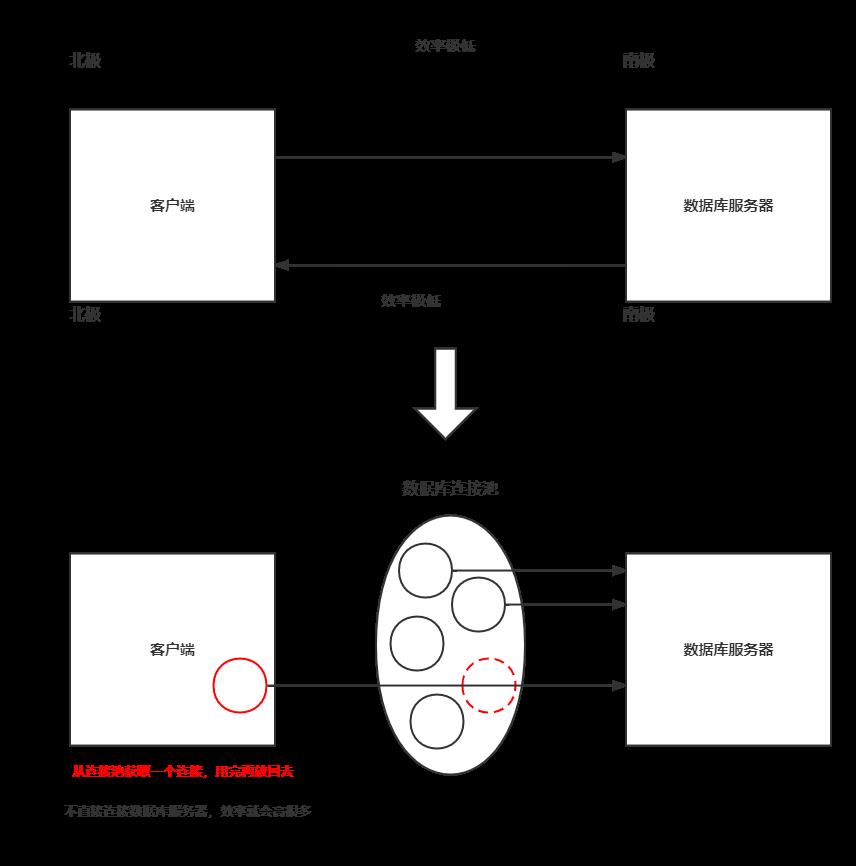
6.编写数据库实体类
package org.example.pojo;
/**
* @Description:
* @Author:cjy
* @Data:2022/5/3
* @Version:
*/
public class Student
private Integer id;
private String name;
private String email;
private Integer age;
/*
无参构造方法
*/
public Student()
/*
全参的构造方法
*/
public Student(Integer id, String name, String email, Integer age)
this.id = id;
this.name = name;
this.email = email;
this.age = age;
/*
不包括主键的构造方法
做增加操作时,主键不需要给值
*/
public Student(String name, String email, Integer age)
this.name = name;
this.email = email;
this.age = age;
@Override
public String toString()
return "Student" +
"id=" + id +
", name='" + name + '\\'' +
", email='" + email + '\\'' +
", age=" + age +
'';
7.编写映射文件(SQL语句)
StudentMapper.xml
先加入约束头文件
<?xml version="1.0" encoding="UTF-8" ?>
<!DOCTYPE mapper PUBLIC "-//mybatis.org//DTD Mapper 3.0//EN"
"http://mybatis.org/dtd/mybatis-3-mapper.dtd">
映射文件的内容:
<?xml version="1.0" encoding="UTF-8" ?>
<!DOCTYPE mapper PUBLIC "-//mybatis.org//DTD Mapper 3.0//EN"
"http://mybatis.org/dtd/mybatis-3-mapper.dtd">
<!--
mapper标签:整个文件的标签,用来开始和结束xml文件
属性:
namespace:指定命名空间(相当于包名),用来区分不同的mapper
-->
<mapper namespace="test">
<!--
完成查询所有学生的功能
List<Student> getAll——测试类查询
resultType:指定查询返回结果集的类型(全限定名),如果是集合,则必须是泛型的类型
parameterType:方法中有参数,则需要此属性指定参数的类型
-->
<select id="getAll" resultType="org.example.pojo.Student">
/*不使用*查询,因为*查询的效率极低*/
select id,name,email,age
from student
</select>
</mapper>
注意: 写完了映射文件之后,是无法直接使用映射文件的,还需要去核心配置文件中注册!!
在核心文件中注册:
<!--注册mapper文件
resource:从resources目录下找到指定的文件加载
url:使用绝对路径注册
class:动态代理方式下载注册
-->
<mappers>
<mapper resource="StudentMapper.xml"></mapper>
</mappers>
</configuration>
http://mybatis.org/dtd/mybatis-3-mapper.dtd 这个文档中规定了此映射文件中可以书写哪些标签
<!ELEMENT mapper (cache-ref | cache | resultMap* | parameterMap* | sql* | insert* | update* | delete* | select* )+>
8.测试类
package org.example;
public class AppTest
@Test
public void test() throws IOException
//使用文件流读取核心配置文件SqlMapConfig.xml
InputStream inputStream = Resources.getResourceAsStream("SqlMapConfig.xml");
//创建SqlSessionFactory工厂
SqlSessionFactory factory = new SqlSessionFactoryBuilder().build(inputStream);
//获取SqlSession对象
SqlSession sqlSession = factory.openSession();
//完成查询操作
List<Student> list = sqlSession.selectList("test.getAll");
list.forEach(student -> System.out.println(student));//输出查询结果
//关闭sqlSession,还回数据库连接池
sqlSession.close();

为什么要用 List<Student> 来存储查询数据?
因为查询结果是一个student对象,而mybatis会在底层帮我们将查询结果封装为一个对象放进list中。
注意,就算只查询一个字段,如name,返回结果依然是Student对象
如:
在映射文件中加入一条语句
<!--
按照id来进行查询
mybatis中Integer的别名是_int或integer,String的别名为string
-->
<select id="getOneById" parameterType="_int" resultType="string">
select name
from student
where id=#id
</select>
测试类:
@Test
public void test1() throws IOException
//使用文件流读取核心配置文件SqlMapConfig.xml
InputStream inputStream = Resources.getResourceAsStream("SqlMapConfig.xml");
//创建SqlSessionFactory工厂
SqlSessionFactory factory = new SqlSessionFactoryBuilder().build(inputStream);
//获取SqlSession对象
SqlSession sqlSession = factory.openSession();
//完成查询操作
String name = sqlSession.selectOne("test.getOneById",1);
System.out.println(name);
//关闭sqlSession,还回数据库连接池
sqlSession.close();
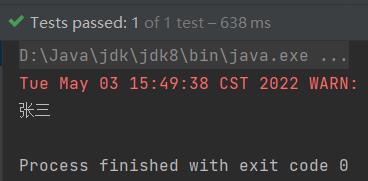
2.Mybatis的增删改查
1.查询
1.查询所有字段
映射文件:
<select id="getAll" resultType="org.example.pojo.Student">
select id,name,email,age
from student
</select>
测试类:
@Test
public void test() throws IOException
//使用文件流读取核心配置文件SqlMapConfig.xml
InputStream inputStream = Resources.getResourceAsStream("SqlMapConfig.xml");
//创建SqlSessionFactory工厂
SqlSessionFactory factory = new SqlSessionFactoryBuilder().build(inputStream);
//获取SqlSession对象
SqlSession sqlSession = factory.openSession();
//完成查询操作
List<Student> list = sqlSession.selectList("test.getAll");
list.forEach(student -> System.out.println(student));//输出查询结果
//关闭sqlSession,还回数据库连接池
sqlSession.close();
2.查询单个字段
<select id="getOneById" parameterType="_int" resultType="string">
select name
from student
where id=#id
</select>
测试类:
@Test
public void test1() throws IOException
//使用文件流读取核心配置文件SqlMapConfig.xml
InputStream inputStream = Resources.getResourceAsStream("SqlMapConfig.xml");
//创建SqlSessionFactory工厂
SqlSessionFactory factory = new SqlSessionFactoryBuilder().build(inputStream);
//获取SqlSession对象
SqlSession sqlSession = factory.openSession();
//完成查询操作
String name = sqlSession.selectOne("test.getOneById",1);
System.out.println(name);
//关闭sqlSession,还回数据库连接池
sqlSession.close();
3.模糊查询
映射文件:
<!--模糊查询
List<Student> getByName
-->
<select id="getByName" parameterType="string" resultType="org.example.pojo.Student">
select id,name,email,age
from student
where name like '%$name%'
</select>
测试类:
@Test
public void test() throws IOException
//使用文件流读取核心配置文件SqlMapConfig.xml
InputStream inputStream = Resources.getResourceAsStream("SqlMapConfig.xml");
//创建SqlSessionFactory工厂
SqlSessionFactory factory = new SqlSessionFactoryBuilder().build(inputStream);
//获取SqlSession对象
SqlSession sqlSession = factory.openSession();
//完成查询操作
List<Student> list = sqlSession.selectList("test.getByName","张");
list.forEach(student -> System.out.println(student));//输出查询结果
//关闭sqlSession,还回数据库连接池
sqlSession.close();
2.增加
映射文件:
<!--增加学生
int insert(Student stu)
-->
<insert id="insert" parameterType="org.example.pojo.Student">
insert into student (name,email,age)
values (#name,#email,#age)
</insert>
测试类:
@Test
public void test() throws IOException
//使用文件流读取核心配置文件SqlMapConfig.xml
InputStream inputStream = Resources.getResourceAsStream("SqlMapConfig.xml");
//创建SqlSessionFactory工厂
SqlSessionFactory factory = new SqlSessionFactoryBuilder().build(inputStream);
//获取SqlSession对象
SqlSession sqlSession = factory.openSession();
//调用方法
int num = sqlSession.insert(
